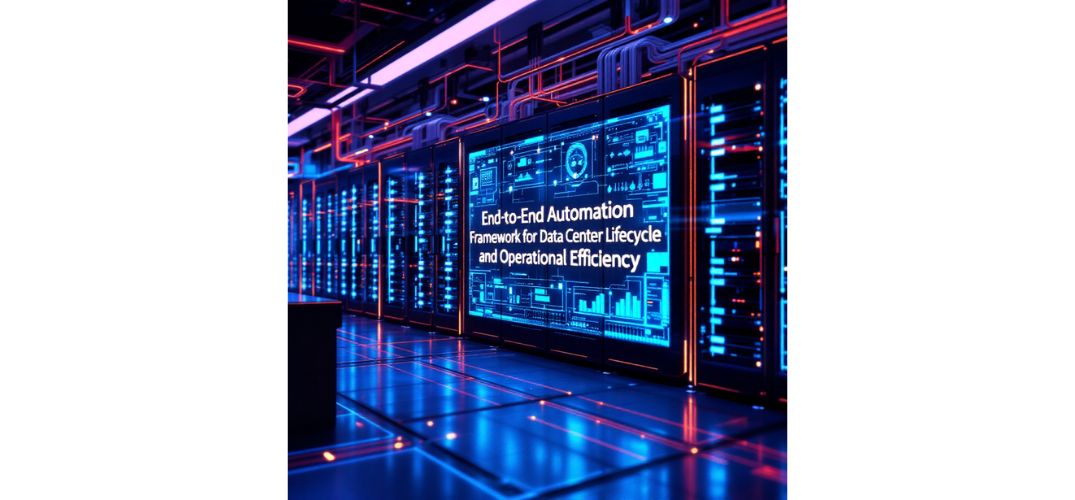In today’s world Shaileshbhai Revabhai Gothi, a prominent figure in infrastructure automation, introduces a transformative framework for streamlining data center operations in his recent publication. With a strategic eye on innovation, he emphasizes the urgency of adopting automated practices to meet the growing demands of digital transformation.
The End of Manual Management
For decades, manual processes ruled data centers, with technicians painstakingly provisioning servers, monitoring systems, and patching vulnerabilities. But as digital ecosystems have ballooned in complexity, this approach has grown untenable. Manual errors and sluggish deployments have led to outages, wasted resources, and spiraling operational costs. Industry-wide, enterprises are now embracing automation not just as a convenience, but as a necessity. The shift is profound: organizations are achieving up to a 43% reduction in operational incidents and dramatically slashing provisioning time, with automation reducing deployment timelines by as much as 7.3 times compared to traditional methods.
Script to Strategy: The Evolution of Automation Tools
The journey to automation has evolved from simple scripting to advanced orchestration platforms, each stage enhancing efficiency, visibility, scalability, and control. Modern orchestration integrates infrastructure, applications, and services into cohesive workflows, offering strategic benefits like cost reduction, faster issue resolution, enhanced agility, and improved availability. Now, organizations are advancing toward intelligent, intent-based automation, aiming to align IT outcomes with broader business objectives, drive innovation, and ensure long-term competitive advantage in a rapidly evolving digital landscape.
Infrastructure as Code: Building with Software Precision
A foundational pillar of this transformation is Infrastructure as Code (IaC), where infrastructure configurations are treated like software versioned, automated, and repeatable. This approach has minimized configuration drift, improved compliance by 60%, and cut support costs substantially. By automating routine operations, IaC frees up engineering resources and reduces human intervention by 50%, allowing teams to concentrate on innovation rather than maintenance. Most notably, it enhances system visibility and reduces mean time to resolution (MTTR) by 72%, driving reliability across operations.
Event-Driven Automation: Letting the System Heal Itself
Event-driven architectures are another key component in this framework. These systems monitor performance in real time and respond automatically to deviations or anomalies. They enable environments to “self-heal,” addressing issues before they escalate. This real-time responsiveness has slashed incident resolution times by half and reduced manual work for common tasks by up to 50%. As enterprises process millions of events daily, these automated responses ensure stability without constant human oversight.
API-Driven Orchestration: Integrating the Ecosystem
Modern data centers are not monoliths, they are mosaics of interconnected systems. API-driven orchestration brings coherence to this complexity. By standardizing interfaces and automating cross-platform workflows, organizations reduce integration costs and time-to-market for new services. This strategy has boosted development efficiency and reduced reliance on niche skillsets, making automation accessible to wider teams. It has also facilitated a 40% reduction in operational overhead for commonly repeated tasks, creating room for rapid innovation.
AI-Powered Predictive Analytics: Seeing Problems Before They Happen
The integration of artificial intelligence and machine learning brings predictive insight into data center operations. These technologies detect anomalies early, reduce noise from false alerts, and enhance incident triage accuracy. With AI, systems now identify deviations from normal behavior patterns 25% faster than traditional methods. This not only improves uptime but optimizes resource allocation by enabling proactive, rather than reactive, operations management.
Laying the Foundation: A Roadmap to Implementation
Successful automation requires more than technology; it needs organizational alignment. A strategic rollout starts with assessing high-impact areas, followed by phased technical deployment and process optimization. Key to success are skilled teams, cultural support, and ongoing learning. Companies that invest in people and processes, not just tools, are significantly more likely to succeed.
In conclusion, Shaileshbhai Revabhai Gothi’s framework doesn’t just reimagine data center operations it establishes automation as a strategic imperative. By embracing Infrastructure as Code, event-driven systems, API orchestration, and AI analytics, organizations unlock operational agility, cost efficiency, and resilience. The future of infrastructure lies not in cables and racks, but in code, insight, and intelligent orchestration enabling enterprises to keep pace with innovation while building systems that heal, adapt, and grow.





























